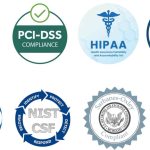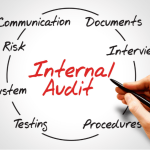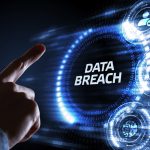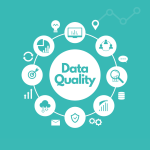• This paper presents a secure design framework for a digital application aimed at reducing procrastination, integrating risk management, threat modeling, and international data protection compliance• It applies standards like ISO/IEC 27001, NIST, OWASP MASVS, and GDPR to ensure confidentiality, integrity, and availability while addressing common cyber threats and … [Read more...] about Information Security Measures for a Procrastination Combatting Digital Solution
Cybersecurity Governance Toolkit
• Cybersecurity governance in higher education aligns information security with institutional mission, protecting sensitive data and maintaining trust• Key components include risk management, policy development, compliance, training, incident response, and performance monitoring• A structured governance program, supported by frameworks like NIST or ISO, improves resilience, … [Read more...] about Cybersecurity Governance Toolkit
Quick Start Guide to Security Compliance
• Cybersecurity compliance affects nearly every business and IT provider, regardless of industry, due to expanding global regulations and contractual obligations• IT service providers must move beyond selling products to building holistic, risk-based security programs, with compliance serving as both a liability shield and revenue opportunity• Developing a strong cybersecurity … [Read more...] about Quick Start Guide to Security Compliance
Best Practices for Cybersecurity Compliance Monitoring
• Cybersecurity compliance monitoring is essential due to complex, overlapping regulations and increasing penalties for non-compliance• Effective monitoring starts with identifying applicable laws, conducting audits, and creating a tailored compliance plan based on risk assessments• Ongoing monitoring, automation, and employee training help maintain compliance and protect … [Read more...] about Best Practices for Cybersecurity Compliance Monitoring
ISO 27001 certification: What happens in the certification audit?
• ISO 27001 certification audits assess whether an organization’s Information Security Management System (ISMS) meets the standard’s requirements• The process includes a two-stage audit (documentation review and implementation review), optional readiness assessment, and post-audit monitoring• Audits identify non-conformities, guide corrective actions, and support continual … [Read more...] about ISO 27001 certification: What happens in the certification audit?
Implementing Technological Controls in ISO 27001
• ISO/IEC 27001:2022 includes 93 controls, with 34 categorized as technological, aimed at protecting information systems and enhancing resilience• Implementing these controls effectively requires risk assessment, contextual tailoring, and balancing security needs with usability and budget constraints• Benefits include regulatory compliance, automation of security processes, and … [Read more...] about Implementing Technological Controls in ISO 27001
Verizon 2025 Data Breach Investigations Report
• The 2025 Verizon DBIR shows cybercrime now operates like an integrated supply chain, linking infostealers, ransomware, access brokers, and malicious infrastructure• Vulnerability exploitation, especially of edge and VPN devices, has surged, while third-party involvement in breaches has doubled year-over-year• Leaked credentials, shadow AI tools, and poor secrets management … [Read more...] about Verizon 2025 Data Breach Investigations Report
CISOs rethink hiring to emphasize skills over degrees and experience
• Cybersecurity leaders are increasingly shifting from degree- and experience-based hiring to skills-based recruitment• Successful implementation requires intentional changes to job descriptions, interview processes, and collaboration with HR• Organizations using this approach report greater candidate diversity, stronger talent pipelines, and better hiring outcomes CISOs are … [Read more...] about CISOs rethink hiring to emphasize skills over degrees and experience
How CISOs Can Master Operational Control Assurance — And Why It Matters
• Dynamic operational control assurance helps CISOs manage risk and compliance in complex cloud and development environments• The approach integrates OSCAL, compliance as code, and AI to provide real-time visibility and proactive threat response• It enables consistent enforcement of security standards from development through deployment, improving legal defensibility and … [Read more...] about How CISOs Can Master Operational Control Assurance — And Why It Matters
How cybersecurity is crucial to the insurance industry
• This is a case history of how a large U.S. property and casualty insurer, "SecureInsure," is responding to escalating cybersecurity threats in 2025• The insurance sector handles vast volumes of sensitive structured and unstructured data, making it an attractive target for ransomware, supply chain breaches, and AI-driven attacks• SecureInsure is strengthening its cybersecurity … [Read more...] about How cybersecurity is crucial to the insurance industry
Does non-compliance in tech really matter?
• Compliance requirements like SOC 2 and ISO 27001 can be time-consuming and disruptive but are often necessary for securing business, meeting regulatory demands, and avoiding legal or financial penalties• The importance of compliance depends heavily on industry, with sectors like finance, healthcare, and operational technology (OT) treating it as mission-critical• Compliance … [Read more...] about Does non-compliance in tech really matter?
PCI DSS Future-Dated Controls: 7 Critical Changes that Will Shape Your Security Strategy
• PCI DSS 4.0.1 introduces 51 future-dated security controls that will become mandatory on March 31, 2025, requiring updates to password policies, multi-factor authentication (MFA), and payment page integrity.• Organizations must transition to longer, more secure passwords or adopt password-less authentication, eliminate hard-coded credentials, and implement script and … [Read more...] about PCI DSS Future-Dated Controls: 7 Critical Changes that Will Shape Your Security Strategy
Cybersecurity checklists and tools for small firms
• Small firms face unique cybersecurity threats and operational challenges due to limited staff, resources, and technical expertise, requiring tailored frameworks for protection, detection, and recovery.• A structured checklist aligned with the NIST Cybersecurity Framework helps firms assess risks, identify vulnerabilities, and establish controls across areas such as … [Read more...] about Cybersecurity checklists and tools for small firms
Managing the Costs of Cybersecurity Risk Management
• Cybersecurity costs can be effectively analyzed using a quality cost model that classifies spending into prevention, appraisal, internal failures, and external failures.• The NIST Cybersecurity Framework (CSF) serves as a basis for linking cybersecurity operations to cost categories, enabling clearer tracking and improvement.• Mapping NIST CSF subcategories to quality cost … [Read more...] about Managing the Costs of Cybersecurity Risk Management
State of Privacy 2025
• Privacy team sizes have declined, but perceptions of understaffing have improved due to increased use of AI and more qualified applicants.• Enterprises that consistently practice privacy by design report stronger board support, better resource allocation, and greater confidence in privacy compliance.• Major challenges include complex global regulations, skills gaps in … [Read more...] about State of Privacy 2025
Important Role of Thermal Imaging for Condition Monitoring
Thermal imaging plays a critical role in condition monitoring by detecting early signs of equipment deterioration through temperature analysis. As machinery ages and faces stresses like friction, corrosion, and vibration, it becomes vulnerable to failure. Thermography provides an early warning system, especially when used as part of predictive maintenance, allowing teams to … [Read more...] about Important Role of Thermal Imaging for Condition Monitoring
The Top 10 Security Awareness Training Solutions For Business
Security Awareness Training (SAT) platforms are essential tools for organizations to reduce human-related cybersecurity risks, especially phishing and email-based attacks. These platforms combine training modules, gamified learning, phishing simulations, and analytics to help users recognize threats and make safer decisions. Phished uses micro-learning and behavioral risk … [Read more...] about The Top 10 Security Awareness Training Solutions For Business
Improving Data Cleaning by Learning From Unstructured Textual Data
This paper introduces a machine learning-based strategy to improve data cleaning by integrating unstructured textual data with traditional structured datasets. Recognizing that structured data often contains errors due to inconsistencies, omissions, or conflicts, the authors propose leveraging textual descriptions, such as product titles or clinical trial summaries, to predict … [Read more...] about Improving Data Cleaning by Learning From Unstructured Textual Data
Mastering the 8D Problem-Solving Methodology: A Guide to Root Cause Analysis in Manufacturing
The 8D (Eight Disciplines) methodology is a systematic problem-solving framework originally developed by Ford to identify and eliminate the root causes of chronic or recurring production and quality issues. Though initially intended for the automotive sector, it is widely used across industries, especially those certified under ISO 9001 or regulated by the FDA. The process … [Read more...] about Mastering the 8D Problem-Solving Methodology: A Guide to Root Cause Analysis in Manufacturing
Solving the Productivity Paradox
The failure of automation-driven strategies to deliver promised productivity gains, known as the “productivity paradox,” stems from a flawed approach that prioritizes cutting labor costs rather than improving value creation. This mindset, rooted in outdated ROI models and managerial assumptions, leads to the replacement of workers with technology without fully understanding or … [Read more...] about Solving the Productivity Paradox





















